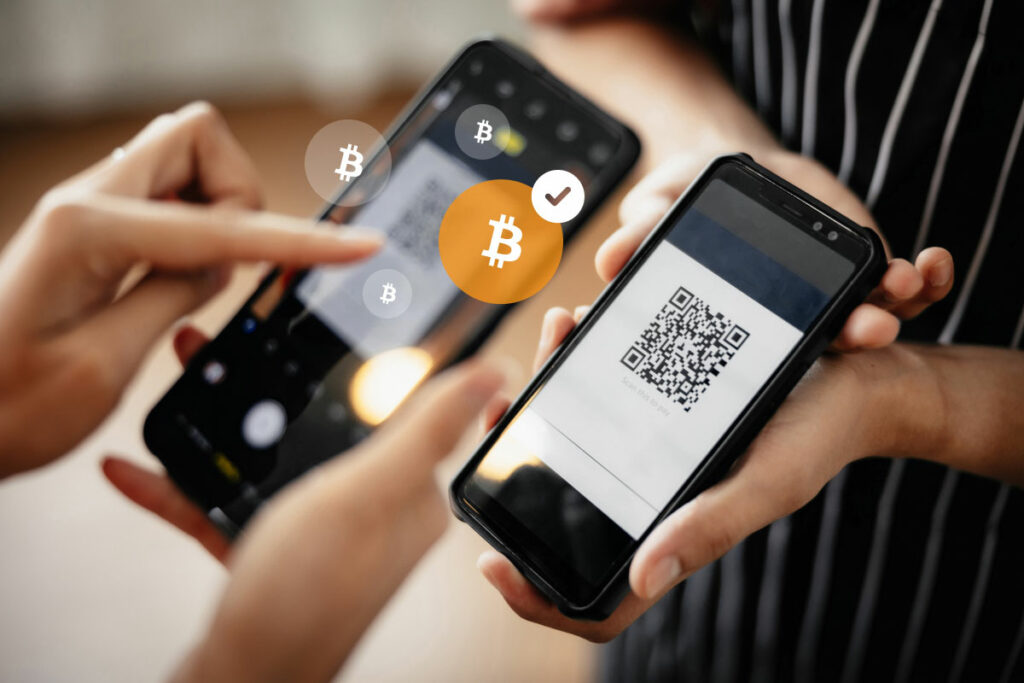What Makes Bitcoin Real Money6 min read
Reading Time: 5 minutesAs the adoption of Bitcoin grows and continues to gain acceptance across the world, it’s important to consider what makes it a superior form of money. Let’s start by looking at money itself and the three primary functions it should perform, which are as follows:
- a store of value
- a medium of exchange
- a unit of account
What makes Bitcoin a good store of value?
In order to evaluate Bitcoin as a store of value, it helps to consider the history of money. Over the course of human history, several iterations of money have existed, including cattle, animal pelts, mollusk shells, precious metals and coins manufactured from those metals. The underlying principle that conferred value to these items was their scarcity at the time. Among the previous metals used as currency, gold stood out as the most scarce since it is one of the rarest naturally occurring metals on earth, and the mining process can be difficult and dangerous.
The amount of gold mined every year is a small percentage of the total global supply, and this is what made it a good store of value. However, gold is heavy and difficult to transport, so it started being used in the form of coins, which presented its own set of problems. Traveling with a large amount of coins was a security issue that made travelers a target for thieves and robbers. Furthermore, gold coins can be counterfeited, and the average person would lack the knowledge and equipment required to verify their authenticity. This led people to rely on goldsmiths as the safe-keepers and verifiers of gold coins. In return for their deposit, the goldsmith would provide a receipt, and receipts from a well-known and reliable goldsmith could be used as currency itself since they were redeemable for gold. This is how gold-backed paper currencies came into existence and remained popular for centuries.
In the 20th century, governments started to realize that gold-backed currencies restricted their monetary and fiscal policies, so in the 1970s, the U.S. abandoned the gold standard – with the rest of the world following suit – in favor of the national “fiat” currencies they use now. Local currencies are no longer redeemable for a scarce and valuable asset, but they supposedly hold value based on the authority of the governments issuing them. This makes it easier for governments to create more spending money, but the creation of more money is an issue because it typically diminishes its purchasing power. For example, the U.S. government increased the money supply by more than 25% in 2020 alone, from $15.33 trillion to $19.19 trillion, which contributed to rising inflation and a loss of purchasing power.
Despite moving away from the gold standard, most sovereign governments still hold large gold reserves because of its scarcity. Bitcoin is often referred to as “digital gold” because of its scarcity, but the comparison doesn’t paint the complete picture. While gold has relative scarcity, Bitcoin has absolute scarcity since only 21 million coins will ever be mined, with the final coins being mined in 2140. Bitcoin has a predetermined schedule of new supply being mined every 10 minutes, and this new supply is halved every four years making it scarcer over time regardless of demand or price increases. By comparison, the World Gold Council estimates that the total gold supply is around 197,576 tonnes, though independent estimates vary by as much as 20%, and the rate of gold mining continues to increase over time.
As previously mentioned, gold can be counterfeited, and the average person is unqualified to verify its authenticity. By contrast, it is theoretically impossible to counterfeit Bitcoin, and it is simple to verify. Due to issues of divisibility and transport, gold is typically stored by governments and central banks in vaults that give them power over record keeping and seizure, while Bitcoin uses a decentralized network for settlement, which means no government or entity has control over it.
What makes Bitcoin a good medium of exchange?
Bitcoin addresses gold’s issues with portability and divisibility. Unlike gold, Bitcoin can be transmitted over several communications channels with a high level of security making it highly transportable. It’s also much easier to travel across borders with Bitcoin since governments historically target gold for confiscation.
As a medium of exchange, Bitcoin’s base layer currently has some issues with scaling. Bitcoin’s popularity and the growth of the network led to an exponential increase in the number of transactions and fees. The SegWit protocol helped increase throughput by dividing transactions into two segments, but Bitcoin still needed a proper scaling solution to handle micropayments. Without a solution, congestion in the blockchain means those who pay lower fees have to wait longer for their transactions to be confirmed.
The Lightning Network was created as a second-layer solution to address these issues. Lightning Network fees are minuscule compared to base-layer transaction fees, and the network is capable of conducting millions of transactions per second that settle almost instantly. As the Lightning Network continues to be adopted as the scaling solution for Bitcoin payments, the use of Bitcoin as a medium of exchange will continue to grow as well. Many businesses today already enjoy the benefits of the Lightning Network as it comes with faster settlement times and lower transaction fees than any local-currency payment processor, like credit cards.

What makes Bitcoin a good unit of account?
Each Bitcoin is divisible into 100 million units referred to as “satoshis”, whereas gold is hard to divide into units of small value due to its density. As time goes on and Bitcoin’s value increases, it appears satoshis will be the unit of account we will refer to when pricing items. Just as the U.S. dollar or euro can be broken down into cents, a Bitcoin can be broken down into satoshis, or sats, for pricing goods and services. Additionally, satoshis can be further divided into milli-satoshis on second-layer protocols like the Lightning Network. As of June 2022, one sat is equal to about .0002744 USD, and with 100 million sats per Bitcoin, it’s easy to do microtransactions. Unlike paper cash that currently acts as a unit of account for currencies like the dollar and euros, sats cannot be hyper-inflated as there will only be 21 million Bitcoin ever in existence, making sats a great unit of account.
One issue that complicates Bitcoin’s use as a medium of exchange and unit of account is its volatility in terms of national currencies. At OpenNode, we address the issue of price volatility with our instant exchange feature. Users who receive Bitcoin payments can instantly convert some or all of their Bitcoin into any of our many supported national currencies. We also make it easy for merchants and individuals to use the Lightning Network and take advantage of the lower fees and faster transactions.
References
- https://www.investopedia.com/articles/07/roots_of_money.asp
- https://fred.stlouisfed.org/series/M2
- https://www.gold.org/about-gold/gold-supply/gold-mining/how-much-gold#:~:text=The%20best%20estimates%20currently%20available,in%20one%20form%20or%20another.
- https://en.bitcoin.it/wiki/Bitcoin_as_a_medium_of_exchange

